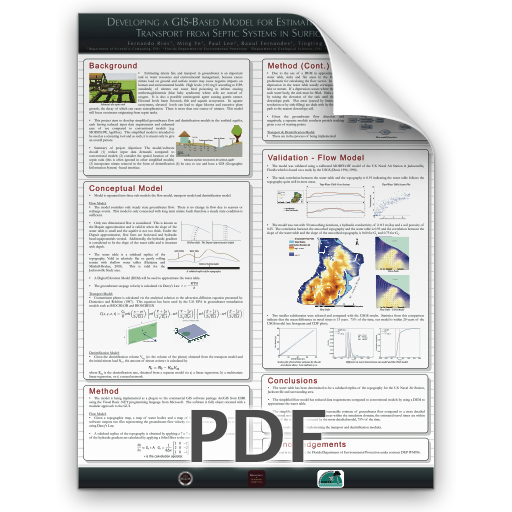
Developing A GIS-Based Model for Estimating Nitrate Fate and Transport from Septic Systems In Surficial Aquifiers
Background
Estimating nitrate fate and transport in groundwater is an important task in water resources and environmental management, because excess nitrate load on ground and surface waters may cause negative impacts on human and environmental health. High levels (>1 0 mg/l according to EPA standards) of nitrates can cause fatal poisoning in infants causing methemoglobinemia (blue baby syndrome) where cells are starved of oxygen. It is also a possible carcinogenic agent causing gastric cancer. Elevated levels harm livestock, fish and aquatic ecosystems. In aquatic ecosystems, elevated levels can lead to algae blooms and excessive plant growth, the decay of which can cause eutrophication. There is more than one source of nitrates. This model will focus on nitrates originating from septic tanks.
This project aims to develop simplified groundwater flow and denitrfication models in the surficial aquifer, each having reduced input data requirements and enhanced ease of use compared to conventional models (e.g. MODFLOW, AgriFlux). This simplified model is intended to be used as a screening tool and as such, it is meant only to give an overall picture.
Summary of project objectives: The model/software should (1 ) reduce input data demands compared to conventional models (2) consider the spatial location of the septic tank (this is often ignored in other simplified models) (3) incorporate nitrate removal in the form of denitrification (4) be easy to use and have a GIS (Geographic Information System) -based interface.


